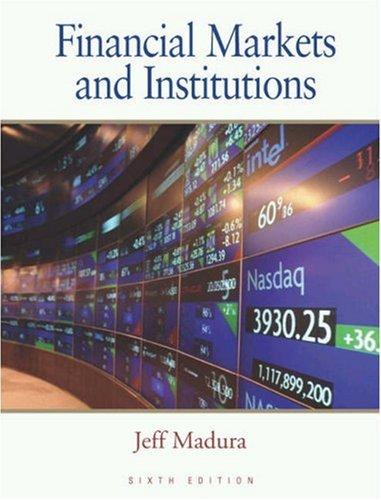Answered step by step
Verified Expert Solution
Question
1 Approved Answer
There has been considerable discussion in the news media that a homeowner should make double mortgage payments or extra payments on his or her 3
There has been considerable discussion in the news media that a homeowner should make double mortgage payments or extra payments on his or her year mortgage. In so doing, the homeowner would save "large" amounts of interest payments and own their home in less than years.
Others have contended that the second payment should be placed in a financial instrument instead of being placed against the mortgage. This approach purportedly would allow the homeowner to pay off the unpaid mortgage after a few years of savings or years for comparability and still have funds in the alternative investment.
Your assignment is obvious. Which philosophy is best? You should assess the creditability of making additional payments to a mortgage instrument and determine if the taxpayer is better off financially if he or she makes extra payments to his or her mortgage or to an investment vehicle. The size of the mortgage, interest rate, rate of return on the investments are left up to you. Of course, you will need to back up your assumptions with hard facts or data from the Internet or hardcopy whatever that is Your analysis should present the advantages and disadvantages of each strategy under "reasonable" assumptions and provide insight to our client ie you
To maximize your performance on this assignment, you need to compare the year fixed payout stream with two alternative strategies. One alternative would be a year balloon mortgage. That is you pay the interest only for years and then pay off the principal at the year mark. The other alternative can be any strategy that you feel comfortable. That is it might be a year payout program or a double payment. It is your choice. But keep in mind that the projects MUST be equivalent investment projects to insure the fairness of the comparison. That means if there is a tax savings received in one alternative, you need to reinvest that amount to equalize the strategies.
My suggestion is for you to consider yourself in solving this case.
Insights to Solving Case
The following procedures may help minimize the frustration associated with this case.
Determine the monthly cost of the three types of mortgages year fixed, year fixed, and a year balloon note
Assume you elect the standard deduction instead of itemizing on your tax return. In making this election, you dont need to deal with the tax savings associated with the interest deduction when itemizing.
Whichever mortgage has the highest per month cost is your outofpocket monthly payment.
a For example, lets assume the year fixed has a payment of $ per month and the year fixed has a payment of $ per month. Then we must assume that we make a $ payment each month on behalf of both mortgages. That is we make a $ payment to the year fixed and a $ payment to the year fixed plus a $ payment to some investment of your choice. In the case of the year fixed, you would make a $ payment to the investment beginning in year when the year mortgage is paid off.
Now, you simply evaluate the value of your investment over the years to see which mortgage selection produces the maximum wealth position for you.
One might subtract out the interest associated with each mortgage to see if that makes a difference in the project selection.
Of course, you would do this type of analysis for all three mortgage options to see which is best. Yes, I appreciate the fact that a taxpayer may not have the ability to save the extra money but the object of this exercise is to allow you to appreciate the value of external borrowing.
I hope this insight is beneficial to you.
Please solve in an excel and please provide the file
The solution should include subject, facts, ask, referencecitation analysis, conclusion
Please consider factors like taxes on investment gains or potential fluctuations in investment returns.
Step by Step Solution
There are 3 Steps involved in it
Step: 1

Get Instant Access to Expert-Tailored Solutions
See step-by-step solutions with expert insights and AI powered tools for academic success
Step: 2

Step: 3

Ace Your Homework with AI
Get the answers you need in no time with our AI-driven, step-by-step assistance
Get Started


